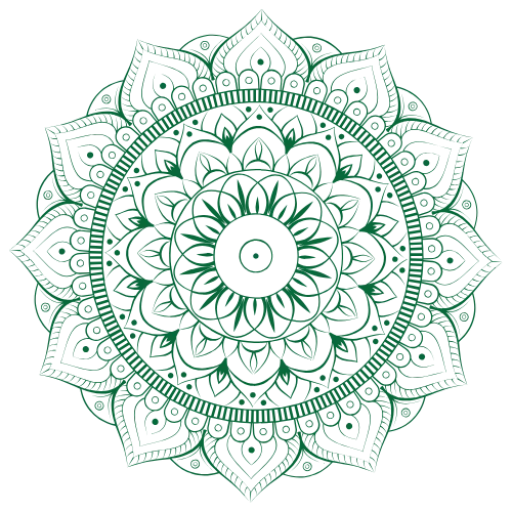Nadis
In addition to the seven chacras of the subtle body, the scriptures have described a network of subtle channels known as nadis through which the life force (prana) circulates. The Sanskrit word nadi derives from the root nad, which means “flow”, “motion” or “ vibration”. References in the Hatha Yoga Pradipika place the number at 72.000 the Prapanchasara Tantra gives the number of 300.000; while the Shiva Samhita states that 350.000 nadis emerge from the navel centre.
Out of the thousands of nadis. Which include the entire minor and major flows, seventy-two are considered important. Out of these seventy-two, ten are considered to be major and three are the most significant. Ida nadi is the mental channel, pingala nadi the vital channel and sushumna nadi the spiritual channel.
According to the system of kundalini yoga; mooladhara chacra is the main plexus of the pranic body from which the nadis emanate. Ida, pingala and sushumna orgininate here and then ida and pingala flow alternately, coiling around the spinal passage from left to right, while sushumna flows straight up through the middle. Ida emerges from the left of mooladhara en covers the left side of the body, pingala emerges from the right of mooladhara and covers the left side of the body. The central axis of ida and pingala is sushsumna. Sushumna flows straight up through the centre of the spine, meeting ida and pingala at the points where they cross the chacras and unite with them at Ajna chacra.
Characteristics of the three most significant nadis:
Pingala; covers right side of the body. Male side (Ha = Sun)
Ida: covers left side of the body. Female side – (Tha = Moon)
Sushumna: meets ida and pingala at the points where they cross the chacras and unite in Ajna chacra.

Exercise: Nadi Shodhana pranayama (purification of the nervous system)
Alternate Nostril breathing which is a beautiful breathing technique that helps keep the mind calm, happy and peaceful by just practicing it for a few minutes. It also helps release accumulated tension and fatigue. The breathing technique is named Nadi Shodhan, as it helps clear out blocked energy channels (ida and pingala) in the body and balances the right and left side of the body and mind.It is also known as Anulom Vilom pranayama.(nadi = subtle energy channel; shodhan = cleaning, purification; pranayama = breathing technique)
- Sit comfortably with your spine erect and shoulders relaxed. Keep a gentle smile on your face.
- Place your left hand on the left knee, palms open to the sky or in chin mudra(thumb and index finger gently touching at the tips).
- Place the tip of the index finger and middle finger of the right hand in between the eyebrows, the ring finger and little finger on the left nostril, and the thumb on the right nostril. We will use the ring finger and little finger to open or close the left nostril and thumb for the right nostril.
- Press your thumb down on the right nostril and breathe out gently through the left nostril.
- Now breathe in from the left nostril and then press the left nostril gently with the ring finger and little finger. Removing the right thumb from the right nostril, breathe out from the right.
- Breathe in from the right nostril and exhale from the left. You have now completed one round of Nadi Shodhan pranayama. Continue inhaling and exhaling from alternate nostrils.
- Complete 9 such rounds by alternately breathing through both the nostrils. After every exhalation, remember to breathe in from the same nostril from which you exhaled. Keep your eyes closed throughout and continue taking long, deep, smooth breaths without any force or effort.
Nadi Shodhana pranayama helps relax the mind and prepares it to enter a meditative state. So, it is a good idea to do a short meditation after doing Nadi Shodhana. 🙂
Acknowledgement:
Prana and pranayama, Swami Niranjananda Saraswati, Yoga Publications Trust, Munger, Bihar, India
Four chapters on freedom, Swami Satyananada saraswati, Yoga publications Trust, Munger, Bihar India
Hatha Yoga Pradipika, Swami Muktbodhananda, Yoga publications Trust Munger, Bihar, India
www.wikipedia.nl
Picture chacras: www.spiralup.ca
Address: Parimukti Yoga Center, Kanira Homes,
Girkarwaddo, End of Magic Park Road,
Arambol, 403524,
Goa, India
Phone: +919637521278
Email: info@parimukti.com
Website: https://parimukti.com/
Yin Yoga Training Goa | 200 Hour Yoga Teacher Training Goa | Meditation Teacher Training Goa
